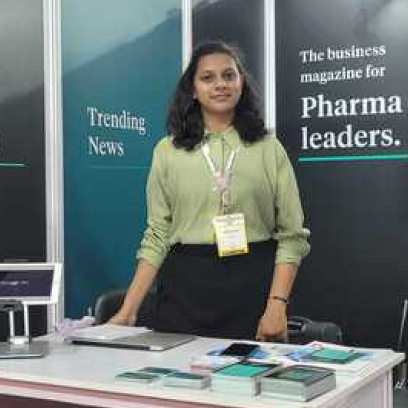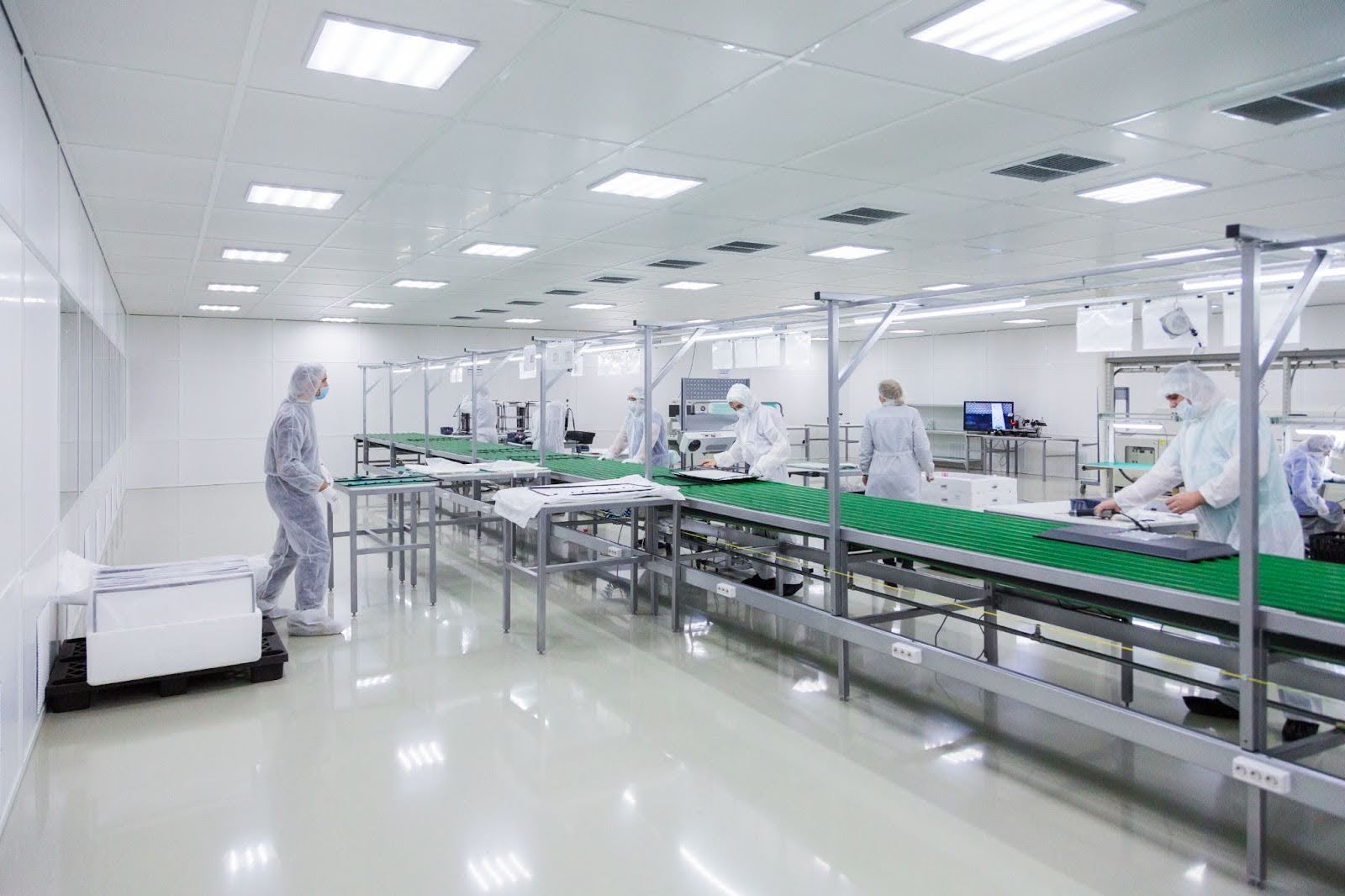by Mrudula Kulkarni
7 minutes
Annex 1 (2022–2023) — What Changed for Environmental Monitoring (EM) & Contamination Control Strategy (CCS) in Pharma Cleanrooms
Annex 1 introduces new rules for EM and CCS in cleanrooms, demanding continuous, risk-based monitoring and data-driven contamination control.

The revision of EU GMP Annex 1 (the guidance for the manufacture of sterile medicinal products) that was published in 2022 and came into force in August 2023 reshaped how sterile manufacturers must think about environmental monitoring and contamination control.
It’s not a matter of tweaking frequencies or renaming reports , Annex 1 introduces a fundamentally different mindset: contamination control is no longer a collection of isolated checks; it must be designed, documented and continuously demonstrated as a facility-wide Contamination Control Strategy (CCS) supported by fit-for-purpose monitoring systems and real-time insight.
Below, we pull together the specific changes that matter to microbial cleanroom teams, explain the practical impact on EM programs and operations, and point to the technology and governance shifts teams should prioritise to stay compliant and make the guidance operational.
The strategic shift: CCS as the organising principle
Prior versions of Annex 1 set expectations for cleanroom classification, monitoring, gowning and cleaning as separate elements. The 2022 revision flips that structure: manufacturers must implement a documented Contamination Control Strategy that spans facility design, equipment, materials, personnel, cleaning/disinfection, process controls and monitoring.
The CCS must be risk-based, dynamic, periodically reviewed and demonstrably linked to operational controls and data, including EM results and trends. In short, monitoring programs are not a compliance afterthought; they are a core element of the CCS and must be designed to detect deviations in time to protect product quality.
Practically, that means any decisions about where to sample, what methods to use, how often to sample and how to respond to excursions must be justified in the CCS and supported by Quality Risk Management (QRM) documentation, not only by historical practice or convenience.
The CCS must also capture how emerging technologies, isolators, RABS, continuous monitoring, and rapid microbiological methods fit into the contamination control picture.
Continuous Monitoring: full-duration surveillance in critical zones
One of the most operationally significant changes concerns continuous monitoring. Annex 1 explicitly requires continuous non-viable particle monitoring in Grade A critical zones for the full duration of critical processing, including equipment set-up, and it requires continuous viable air monitoring in Grade A by active sampling or settle plates for the full duration of critical processing.
The document also states that Grade B should be monitored similarly, where the risk to the aseptic process justifies it. Continuous monitoring must capture transient events, interventions and system deterioration; alarms should be set so that exceedances trigger investigation and corrective actions.
This moves many operations away from periodic spot checks toward continuous, in-process observation.
Operational consequences are immediate: particle counters and viable monitoring approaches must be configured to run for full campaigns, data architecture must handle continuous streams, and alarm management and SOPs must be revised so that operators, supervisors have clear, pre-agreed responses to alerts and excursions.
The CCS should document sample volumes, sampling rates and the justification for each monitoring location and method. Understanding active air vs settle vs contact plates helps define appropriate viable air sampling methods that meet Annex 1’s continuous monitoring expectations.
Viable + non-viable monitoring: clearer expectations and particle sizes
Annex 1 tightens the relationship between viable and non-viable monitoring and calls out the particle sizes to measure for cleanroom classification (≥0.5 µm and ≥5 µm).
It clarifies that classification is distinct from operational monitoring and stresses that non-viable particle counts alone do not guarantee asepsis; viable monitoring and trend analysis are required to provide a fuller risk picture.
Facilities should ensure that both viable and non-viable monitoring programs are aligned with the CCS and that classification re-checks and requalification are performed in simulated operations or APS (Aseptic Process Simulation) conditions.
The principles in USP <1116> alert and action levels complement Annex 1 by providing statistical guidance for setting realistic EM thresholds.
Annex 1’s tables for particle limits and their interpretation have produced debate, particularly about the role of ≥5 µm counts in Grade A/B, so quality teams should document the rationale for particle size surveillance choices in the CCS and use historical data to set initial alert/action levels.
Where industry data differ from the nominal ratios in the text, the CCS should capture why a given approach is more representative of local operations.
Action & alert levels, alarms and trend analytics — monitoring must be actionable
Annex 1 makes it explicit that alert and action levels are an integral part of monitoring: EM data must be trended actively, alarms should be triggered on exceedance of alert levels, and corrective actions must follow documented procedures.
Monitoring alone is insufficient; the organisation must demonstrate that it can detect, investigate and correct deviations in a timely manner. Robust investigations of EM excursions help close the loop between alarms, CAPA, and updates to the CCS.
Implementing defined alert and action levels in cleanroom monitoring ensures Annex 1 alarm responses are both measurable and compliant. The CCS should include alarm thresholds, responsibilities for responding, and the process for escalating investigations to the Quality Unit.
This puts data practices in the spotlight. Teams must ensure that EM data are reviewed at a tempo that matches process risk, that automated alarms feed into incident workflows, and that investigations include root-cause analysis, CAPA and updates to the CCS where needed.
For regulators, the presence of robust trend analysis, defect libraries and effective alarm response will be one of the clearest signals of a mature contamination control approach.
Rapid Microbiological Methods (RMM) and real-time viable particle counters
Annex 1 explicitly encourages consideration and use of rapid/alternative microbiological methods, including viable particle counters and automated or continuous microbial monitoring where they are demonstrated to be equivalent or superior to classical methods.
Manufacturers are expected to validate those methods and document equivalence (or superiority) to compendial methods before implementation. Selecting capable environmental monitoring vendors and tools is critical for validating RMM systems and ensuring data integrity across monitoring platforms.
The guidance recognises that RMMs can provide earlier detection of contamination and therefore reduce risk to product and patient safety.
From a practical standpoint, evaluating RMMs is no longer just a “nice to have” modernisation project: the CCS should contain the technical and validation case for selected RMMs, including recovery efficiency, limits of detection, false positive/negative profiles, interference testing and integration with alarm and data review workflows.
Where RMMs alter sampling methodologies or replace traditional plate counts, the transition should be described in the CCS and supported by bridging studies.
Cleaning, sporicidal bio-decontamination and disinfectant strategies
Annex 1 strengthens expectations around cleaning and bio-decontamination: cleaning steps that precede sporicidal bio-decontamination must be effective (residues that inhibit sporicides must be avoided), and isolator/RABS interior bio-decontamination cycles must be validated and include an appropriate sporicidal agent.
The CCS should document the cleaning/disinfection programme, product selection and validation of methods (including evidence that agents do not adversely affect product or equipment).
The guidance also requires that gloves, gowns and single-use systems are managed in the CCS with validated decontamination/sterilisation approaches and appropriate pre-use handling.
For operations, this means a renewed emphasis on cleaning validation, demonstration of sporicidal efficacy, periodic revalidation (or challenge testing) and careful selection and rotation of disinfectants where resistance or biofilm risk is identified.
The CCS should identify where single-use or closed systems reduce manipulations and where extra controls are required for fragile or manually intensive assemblies.
People, gowning and personnel monitoring
Personnel remain the principal contamination source for aseptic fill-finish operations, and Annex 1 tightens controls around gowning, glove integrity, and personnel monitoring.
Gloves used in Grade A areas for RABS should be sterilised or robustly bio-decontaminated before each campaign; glove integrity testing is expected; personnel monitoring must be risk-based and include sampling after critical interventions and on exits.
The CCS should justify the spacing and methods of personnel monitoring and how results feed into CAPA and re-training.
This drives operational changes such as:
- More frequent glove checks: Implement routine glove integrity testing and visual inspections.
- Rework gowning SOPs: Update procedures to align with Annex 1 expectations for sterile gowning and handling.
- Clearer intervention protocols: Define step-by-step actions for interventions in Grade A/B zones.
- Stronger production–Quality integration: Establish clear authority on who halts a run or triggers extra sampling after personnel-related excursions.
Aseptic Process Simulation (APS) and requalification
Annex 1 preserves the role of APS as a key verification tool but tightens expectations about frequency and representativeness. APS should mimic routine batch sizes and operations, and operators should demonstrate competency with at least three consecutive successful APS runs and periodic revalidation thereafter.
The CCS should specify APS design, acceptance criteria and requalification intervals. This ties back to EM: APS results influence monitoring strategies, locations and alert thresholds in the CCS.
Implementation timeline and regulatory context
The revised Annex 1 text was published in 2022 and entered into force on 25 August 2023. PIC/S published an aligned Annex 1 that entered into force on the same date. That timeline means manufacturers already face regulator expectations to have CCS-aligned EM and monitoring programmes in place and routinely operating.
Organisations must be able to show when CCS elements were introduced, how monitoring was changed, and evidence that new methods were validated and are working as intended.
How to prioritise changes
- Turn CCS into an executable program: Move beyond theory by mapping risks, documenting controls, and linking monitoring directly to operations.
- Map facility risk profile: Assess products, processes, and technologies, then overlay existing EM capabilities.
- Identify quick-win controls: Ensure continuous particle monitoring is active and alarmed in Grade A zones.
- Confirm that settlement plates or active viable samplers cover the full processing duration.
- Validate rapid microbiological methods (RMM): Prioritise validation where real-time viable detection improves response speed and reduces risk.
- Update SOPs: Revise for alarm handling, trend review frequency, and personnel monitoring practices.
- Strengthen cleaning/disinfection validation: Include sporicidal steps for isolators and RABS, and ensure rotation/validation are captured in the CCS.
- Invest in data management: Integrate continuous monitoring with investigation workflows, CAPA tracking, and trend dashboards for Quality oversight.
Final thought
Annex 1’s 2022 revision is less a change of rules than a change of architecture. Environmental monitoring and contamination control move from being discrete compliance tasks to being the operational sensors and feedback loops of a facility-wide Contamination Control Strategy.
For cleanroom and microbiology teams, the practical implications are significant: continuous monitoring, clearer viable/non-viable alignment, validated rapid methods, stronger cleaning validation and a living CCS that ties it all together.
A data-driven approach to designing an environmental monitoring program ensures each CCS element—from sampling locations to frequency—is scientifically justified and auditable.
The organisations that treat Annex 1 as an opportunity to modernise monitoring, data management and incident response will reduce product risk and reduce the regulatory heat associated with contamination incidents.
FAQs
Q1. When did Annex 1 (2022) come into force?
The revised Annex 1 was published in 2022 and became effective on 25 August 2023 (a single paragraph was deferred to 25 Aug 2024).
Q2. Does Annex 1 require continuous monitoring?
Yes — Annex 1 requires continuous non-viable particle monitoring in Grade A for the full duration of critical processing and continuous viable monitoring in Grade A (and risk-based consideration for Grade B).
Q3. Are rapid microbiological methods allowed under Annex 1?
Annex 1 encourages the use of suitable rapid/alternative methods (RMMs, viable particle counters) provided they are validated and shown to be equivalent or superior to established methods.
Q4. What is the single most important operational change for EM teams?
Think and design monitoring within a documented, risk-based Contamination Control Strategy that mandates continuous surveillance in critical zones, active alarm management, and integration of EM data into CAPA and CCS updates.




